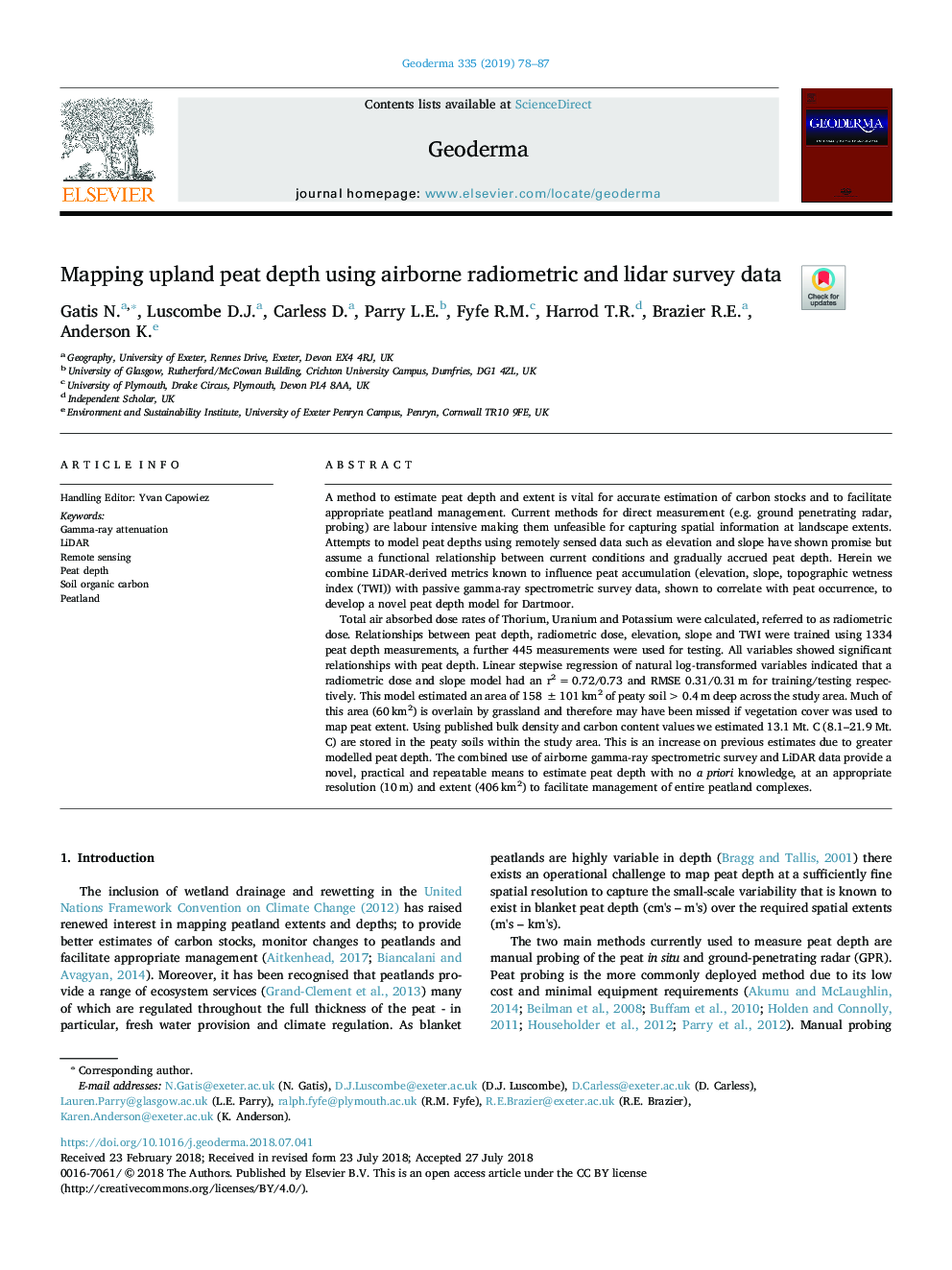| Article ID | Journal | Published Year | Pages | File Type |
|---|---|---|---|---|
| 8893804 | Geoderma | 2019 | 10 Pages |
Abstract
Total air absorbed dose rates of Thorium, Uranium and Potassium were calculated, referred to as radiometric dose. Relationships between peat depth, radiometric dose, elevation, slope and TWI were trained using 1334 peat depth measurements, a further 445 measurements were used for testing. All variables showed significant relationships with peat depth. Linear stepwise regression of natural log-transformed variables indicated that a radiometric dose and slope model had an r2â¯=â¯0.72/0.73 and RMSE 0.31/0.31â¯m for training/testing respectively. This model estimated an area of 158â¯Â±101â¯km2 of peaty soil >0.4â¯m deep across the study area. Much of this area (60â¯km2) is overlain by grassland and therefore may have been missed if vegetation cover was used to map peat extent. Using published bulk density and carbon content values we estimated 13.1 Mt. C (8.1-21.9 Mt. C) are stored in the peaty soils within the study area. This is an increase on previous estimates due to greater modelled peat depth. The combined use of airborne gamma-ray spectrometric survey and LiDAR data provide a novel, practical and repeatable means to estimate peat depth with no a priori knowledge, at an appropriate resolution (10â¯m) and extent (406â¯km2) to facilitate management of entire peatland complexes.
Related Topics
Physical Sciences and Engineering
Earth and Planetary Sciences
Earth-Surface Processes
Authors
Gatis N., Luscombe D.J., Carless D., Parry L.E., Fyfe R.M., Harrod T.R., Brazier R.E., Anderson K.,
